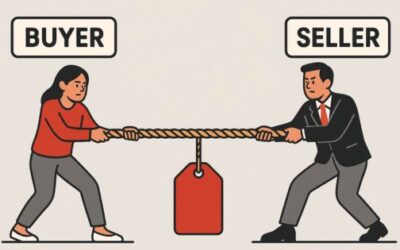Eighty-six percent of B2B sales fall apart before they close. Only 10% of sellers put the buyer first. That’s not a coincidence.
Most sellers still lead with what they want to say, rather than what the buyer is trying to solve. Buyers see it, and they walk. There’s a gap in how selling is done and fixing it has to be the starting point for any team trying to grow.
Fix the parts of your sales system that keep buyers from saying yes.
Most Sales Processes Don’t Help Buyers Understand Their Own Problems
If 86% of B2B sales fall apart, it’s because the process fails to keep the buyer engaged. Somewhere along the way, they lose interest, stop trusting the conversation, or decide the seller can’t help.
Too many sales processes default to pitching. They skip the hard work of uncovering the buyer’s problem, understanding what’s causing it, and showing what happens if it’s left unresolved. When that doesn’t happen, the buyer tunes out. They don’t need another product, they need a solution to a problem and someone who can help them make sense of what they’re dealing with.
Most Sellers Don’t Actually Put the Buyer First
Only a fraction of sellers operate with the buyer’s problem at the center of the conversation. The rest focus on hitting quotas, getting to demo, or checking boxes in a sales process. Buyers feel it.
Putting the buyer first means understanding where they are, what they’re struggling with, and how their business is suffering as a result. It means asking questions that surface the problem behind the symptoms. Sellers get caught up in the activities they have to do, getting to a demo, collecting information for a follow-up, moving a deal in the CRM, and confuse these with progress being made with the buyer.
How to Move from the 90% to the 10%
If you want to move out of the 90%, stop starting with your product. Start with the problem.
Begin by figuring out what’s not working. Your product only solves a handful of problems. It shouldn’t take long to hone in on which one the buyer is actually dealing with. Then go deeper. What’s causing it? What are the breakdowns in process, tools, or execution that keep this issue alive?
And finally, what’s it costing them? Not just today, but next quarter, next year. What happens if they don’t fix it?
There’s been no mention of your product yet. And that’s the point. The second you take the product out of the equation, you make space for the buyer’s reality. You stop selling and start helping. That’s how you build urgency. That’s how you earn trust. And that’s how you get into the 10%.
Use the PIC Chart to Anchor the Conversation
Gap Selling offer something most sales methodologies don’t, the PIC chart. Short for Problem Identification Chart, the PIC is a core tool in problem-centric selling. It helps sellers prepare for conversation by focusing on what matters most to buyers, their problems.
Start by listing the 3-5 problems you product solves. Not what it does, but the big problems that can’t be directly addressed by flipping a switch. Then dig into what’s causing the problems. What’s broken, where’s the friction? These root causes are what your features solve directly. Finally, map the impact. What’s the cost to the business of leaving the problem unaddressed.
This isn’t something you show buyers. This is to keep you or your sellers grounded. It’s a preparation cheat sheet.
Win More B2B Deals
When the conversation isn’t useful, buyers disengage. A majority of sales processes don’t assist them in uncovering what’s wrong, why it’s happening, or what it’s costing them.
To fix it requires a shift in how sellers think, from how quickly can I get to my pitch to how can I find the best solution to their issue. Gap Selling gives teams the structure and training to do it.




0 Comments